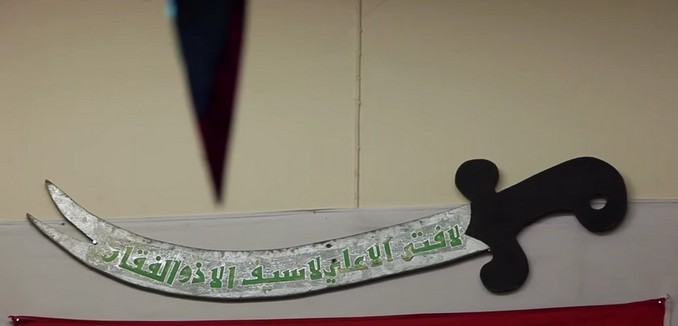Kataib al-Imam Ali, an Iraqi Shiite militia with strong ties to Iran, is headed by a terrorist with a long record of attacking American interests according to terrorism experts Matthew Levitt and Phillip Smyth in a paper published by the Washington Institute of Near East Policy on Monday.
Levitt and Smyth write that Kataib al-Imam Ali “burst onto the scene with uniformed and well-armed members,” and that some of its members “posed in videos with the severed heads of their slain enemies.” They also report about the group’s leadership.
Shebl al-Zaidi, the secretary-general of Kataib al-Imam Ali, was once a noted figure in Muqtada al-Sadr’s Mahdi Army — and reportedly one of its more vicious sectarian leaders. He was jailed during the U.S. occupation of Iraq, only to be released by the Iraqi government in 2010. Last summer, as Kataib al-Imam Ali became more established after its June debut, Zaidi was photographed with Qasem Soleimani, commander of Iran’s Islamic Revolutionary Guard Corps-Qods Force. The group also appears to have strong links with the Iraqi government; in August and September, it published pictures of Zaidi riding in an Iraqi army helicopter and one of the militia’s field commanders, Abu Azrael, manning a different helicopter’s machine gun.
However, another IRGC-linked leader, Abu Mahdi al-Muhandis, appears to head Kataib al-Imam Ali’s operations and expansion efforts, and his presence explains the group’s meteoric growth. Wearing patches belonging to the militia and shown in a number of photos embracing Zaidi, Muhandis is a commander with considerable experience in building new extremist Shiite groups — and a long history of attacks against Americans and American interests.
Levitt and Smyth write that, in the 1990’s, Muhandis “had Iranian citizenship, and […] became an advisor to Qods Force commander Soleimani.” He emerged as one of the “key Shiite militant leaders” fighting American and coalition forces after the invasion that toppled Saddam Hussein.
In 2007, Muhandis formed Kataib Hezbollah (“Hezbollah brigades” or KH) and his group received “more sophisticated training and sensitive equipment than all other Iranian proxies in Iraq.” KH worked closely with its Lebanese namesake and also sent fighters to Syria in support of the Assad regime.
According to Levitt and Smyth, Iran’s goal in creating multiple militias under its control is “to diversify its political and military portfolio in Iraq” with the goal to “slowly impart and legitimize its ideology and power within Iraq.”
Iran’s control of the Shiite militias in Iraq is one of the ways it continues to destabilize the Middle East and spread its influence across the region.
David Daoud summed up Iran’s tactics in Is ISIS Distracting Us from a More Serious Iranian Threat?, which was published in the November 2014 issue of The Tower Magazine:
Iran’s use of terrorism is ideological, but it is not only that. It is also used to achieve very specific goals: To further foreign policy ambitions, provide cover for intelligence operations, and create instability in the Middle East that Iran can exploit to its benefit. Over the past decade, Iran has increased its international terrorist activities and sponsorship, providing financial and military support to terrorist groups throughout the Middle East and Asia. Via IRGC-QF and Hezbollah, for example, it provided training in IED manufacturing and the use of advanced weaponry to Iraqi Shi’a militias targeting American forces. In another case, it plotted the assassination of the Saudi Ambassador to the United States. Iran has also increased its presence in Africa, destabilized Bahrain, and sown chaos in Yemen through its Houthi proxies.
[Photo: BBC News / YouTube ]




